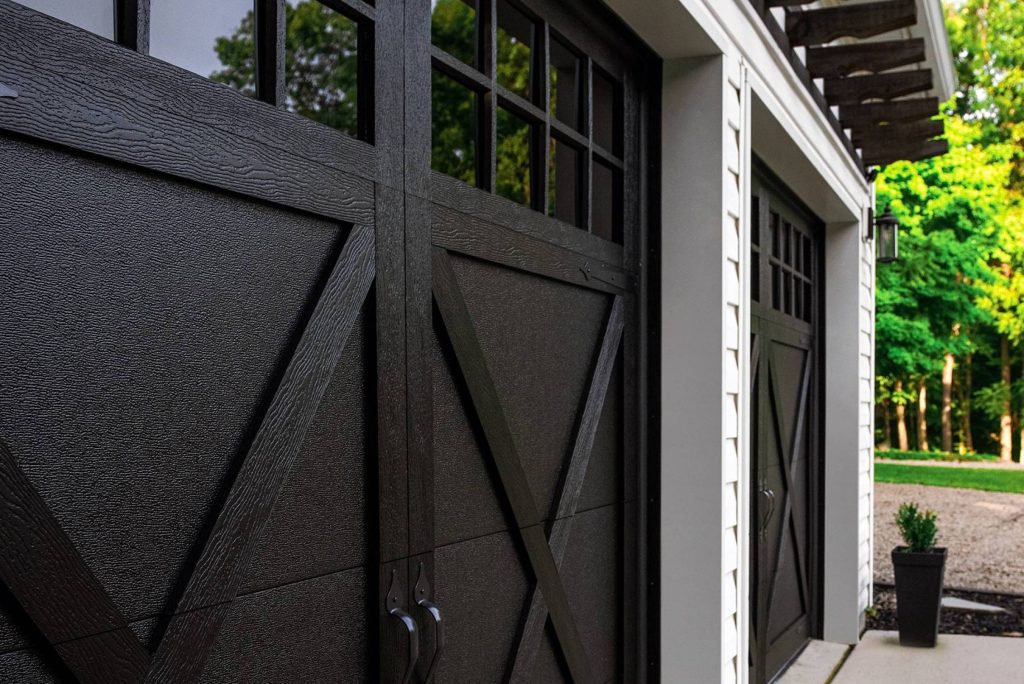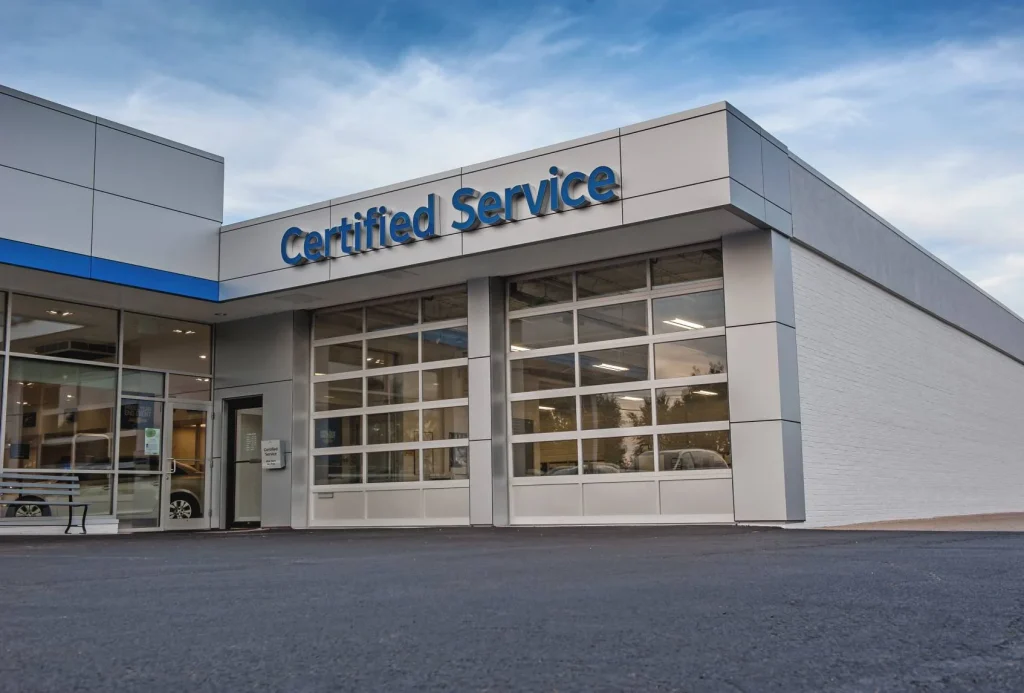Garage Door Seal in St. Clair Shores, MI
Weatherproofing Solutions for a Better Insulation
Locally Based, Regionally Trusted
Since 2017
Schedule A Service Request
We Serve Businesses In And Around The Following Cities:
About Garage Door Seals
Garage Door Seal Solutions for Commercial Properties in St. Clair Shores
The Vital Role of Garage Door Seals in Commercial Properties
In the bustling commercial hub of St. Clair Shores, the functionality and maintenance of a commercial space can significantly impact a business’s operations and reputation. Among the various elements that ensure the smooth running of a commercial property, the garage door is often overlooked. Yet, the importance of a proper garage door seal can't be overstated. Garage doors often serve as a major entry and exit point, not just for vehicles but also for goods and staff. Therefore, maintaining an effective seal is crucial for a plethora of reasons ranging from energy efficiency to security and pest control.
Garage door seals serve as a formidable barrier against external elements. In a city like St. Clair Shores, known for its fluctuating weather conditions, the integrity of a seal can protect against water ingress during heavy rains, prevent heat loss in winter, and safeguard against the intrusion of debris and small animals. For commercial entities, the implications are expansive - reduced heating and cooling costs, lower risk of water-damaged goods, and a cleaner, safer business environment.
Understanding the Different Types of Garage Door Seals
When discussing garage door seals, it is essential to consider the various types that might be applicable for different kinds of commercial properties. The commonly used types include bottom seals, weather stripping, threshold seals, and brush seals. Each type provides distinct advantages. The garage door under seal, often referred to as the bottom seal, is specifically designed to seal the gap between the garage door and the floor. This prevents air exchange and protects against pests.
Weather stripping can be applied around the edges of the garage door, ensuring that no air can pass through the sides during harsh weather. It's particularly useful in regions prone to cold temperatures and strong winds. Threshold seals are more robust and are placed on the garage floor under the door to enhance stability and protection against water flow. Lastly, brush seals are ideal for sealing doors that experience frequent movement, maintaining a tight seal even with repeated use.
The Process of Installing a Garage Door Seal
Replacing or installing a garage door seal involves several important steps that require precision and expertise. Firstly, an evaluation of the existing door and seal conditions is conducted to determine the type of seal necessary and the extent of wear. It's crucial that the chosen seal material fits perfectly and complements the function of the commercial property in question. Once the appropriate type of seal is selected, meticulous measurement ensures that the seal will be perfectly aligned with the door.
Installation requires the removal of any old seals or residual materials that could impede the new seal. Once the area is prepared, the new seal is carefully attached, often requiring tools and adhesives to secure it effectively. Precision is vital in this step to avoid gaps that could undermine the seal’s functionality. For ongoing reliability, regular inspections and maintenance are recommended to address wear and tear quickly, which can often be easily overlooked in a busy commercial setting.
Real-World Benefits for Businesses
For many businesses in St. Clair Shores, maintaining an efficient environment speaks directly to cost management and service quality. The installation of a high-quality garage door seal translates directly into savings. Energy costs are reduced as temperature control becomes more manageable, keeping heating and cooling systems from working overtime to compensate for air leakage. For businesses dealing with temperature-sensitive goods, this is particularly crucial.
Another substantial benefit lies in the protection against elements and infestations. Keeping pests out not only preserves stock but also ensures compliance with health and safety regulations. Additionally, a good seal minimizes dirt and debris intrusion, maintaining a cleaner space that promotes a professional image. This is particularly important for businesses that frequently welcome clients or partners into their facilities.
Enhancing Business Operations and Security
A solid garage seal door also influences security measures. By ensuring a well-fitted, intact seal, businesses reduce the risk of entry points for unauthorized access. Although it may seem minor compared to locks and security systems, the role of a garage door seal should not be neglected in holistic security planning.
Moreover, maintaining optimal conditions within a commercial space enhances employee comfort and productivity. Employees working in an environment where temperature and cleanliness are controlled are likely to experience higher job satisfaction and output. This directly impacts business efficiency, particularly in logistics and warehousing sectors common in St. Clair Shores.
The Role of D&J Contracting
When it comes to ensuring the longevity and effectiveness of garage door seals, the expertise of a seasoned contractor is invaluable. In St. Clair Shores, D&J Contracting stands out for its commitment to quality and customer satisfaction. Their approach to garage door seal installation and maintenance ensures that the seals not only meet but exceed commercial standards.
D&J Contracting brings a level of precision and reliability critical for commercial entities who cannot afford disruptions and require seamless operations throughout the year. Their tailored services mean that each garage door seal is perfectly suited to the specific needs of the business, ensuring optimal performance and longevity.
Innovative Applications in Modern Commercial Infrastructure
Innovation in commercial infrastructure has led to the development of advanced garage door seal technologies that serve specialized needs. For example, businesses that operate environmentally sensitive manufacturing processes can benefit from seals designed to prevent chemical seepage and maintain controlled environments. This is particularly relevant for sectors like pharmaceuticals and food processing, where contamination poses significant risks.
St. Clair Shores businesses are increasingly leaning towards bespoke solutions that integrate traditional sealing methods with modern materials designed for enhanced durability and efficiency. By embracing these innovations, businesses not only improve their operational efficiency but also significantly reduce their ecological footprint, aligning with broader environmental sustainability goals.
Leveraging Garage Door Seals Beyond Temperature Control
A common misconception about garage door seal application is that its benefits are locked solely into temperature control. However, these seals also contribute to noise reduction, a critical aspect for businesses situated in busy areas or near traffic routes common in St. Clair Shores. By significantly dampening external noise, garage door seals help maintain a quieter, more focused working environment.
Furthermore, the ability to control airflow helps manage humidity levels inside commercial spaces, which is essential for operations that rely on moisture-sensitive equipment or inventory. This often overlooked aspect of a garage door seal can extend the lifespan of machinery and goods, representing a significant long-term cost-saving measure.
Final Reflections on Implementing Garage Door Seals
As businesses in St. Clair Shores navigate the complexities of maintaining efficient and secure commercial properties, the role of a properly installed and maintained garage door seal becomes indispensably clear. Not only do these seals ensure optimal operational conditions, but they also serve as a subtle yet significant contributor to cost management, security, and environmental control. Investing in the expertise of professionals like D&J Contracting helps business owners unlock these benefits, ensuring that their commercial spaces operate smoothly, efficiently, and securely year-round.
In the dynamic environment of St. Clair Shores, the integration of robust garage door sealing solutions presents a practical approach to enhancing business operations. It allows commercial entities to maintain an edge in efficiency and reliability, crucial factors in sustaining growth and competitiveness in any commercial landscape.
Garage Door Seals Gallery



Call Us Today to receive your Free Quote for Garage Door Seal in St. Clair Shores
Serving: St. Clair Shores, Michigan

About St. Clair Shores, Michigan
Located along the shores of Lake St. Clair and inhabited by French settlers as early as 1710, during which time the area was referred to as L'anse Creuse, the future St. Clair Shores would remain mainly a rural farming area populated by largely French and German immigrant families into the early 20th century. These local family surnames have survived into the 21st century and can be found in the surnames of current residents and among numerous residential street names.
From 1835 until 1843, the area was part of Orange Township, among the first townships platted in Michigan and part of Macomb County. In 1843, Orange Township was renamed Erin Township, in homage to the numerous Irish immigrants who had moved into the area and had begun to exert their political influence. From 1843 until 1911, what is now St. Clair Shores was a part of Erin Township, parts of which make up today's municipalities of Eastpointe, Roseville, and St. Clair Shores.
In 1911, the eastern portion of Erin Township was partitioned off to become Lake Township. St. Clair Shores was incorporated as a village in 1925 and remained a part of Lake Township until, after numerous failed attempts, its residents voted to incorporate as the city of St. Clair Shores in January 1951. Lake Township continued adjacent to the city until 2009, when residents of the village of Grosse Pointe Shores (that portion of Grosse Pointe Shores in Macomb County located within Lake Township) voted to incorporate as a city.
Beginning around the time of the First World War, St. Clair Shores became a favored playground for gamblers, rum runners, and lakefront tourists alike, culminating during Prohibition, but continuing through the Second World War era. During these years, the village was the home to many popular roadhouses, blind pigs, and gambling establishments, such as the Blossom Heath Inn. St. Clair Shores' lakefront location and proximity to Canada coupled with a receptive and often participative community made it an advantageous haven for rum runners, and the area was actively involved in the rum-running era of Prohibition. Local residents, politicians, and law enforcement of the era were known to sometimes conflict with both state and federal officials over their attempts to regulate these illegal, but economically vital, activities within the community.
The Eagle Pointe subdivision, one of many platted within the village of St. Clair Shores during the early 20th century, was platted along a part of the lake shore in 1916. During the next few decades, dozens of subdivisions were platted through the local farmland, but most were not developed in earnest until after the Second World War, when St. Clair Shores became the fastest-growing suburb of Detroit during the 1950s.
From 1927 until 1959, the community was the location of the Jefferson Beach Amusement Park, a major lakefront attraction for the Detroit area and beyond. Opened in 1927, it boasted the longest roller coaster in the United States and numerous other midway attractions, a large, ornate lakefront dance pavilion, and a large, sandy beach popular with swimmers and sun bathers. In 1955, a fire destroyed some of the attractions and buildings within the once-popular park, and this, coupled with changing public tastes, accelerated its demise. While the owners of Jefferson Beach Amusement Park considered rebuilding, by this time the park was not popular with local government officials, and the city council had begun exploring forcing the closure of the facility or purchasing it for public use. Instead, the park owners, who had previously started building an onsite marina facility, began to expand that part of the facility. By 1959, the remaining park amusements and buildings were demolished to make room for the greatly enlarged Jefferson Beach Marina. All that remained of the once grand amusement park was its large, ornate lakefront dance coliseum, which for years thereafter was relegated to use as a marina storage facility and marine supply store until it, too, was destroyed by fire.
St. Clair Shores is in southern Macomb County, on the western side of Lake St. Clair. It is bordered to the west by the cities of Roseville and Eastpointe and to the south, in Wayne County, by Harper Woods, Grosse Pointe Woods, and Grosse Pointe Shores. Interstate 94 runs along the western edge of the city, with access from Exits 224 through 230. I-94 leads southwest 13 miles (21 km) to midtown Detroit and northeast 40 miles (64 km) to Port Huron.
According to the U.S. Census Bureau, St. Clair Shores has a total area of 14.40 square miles (37.30 km), of which 2.72 square miles (7.04 km), or 18.9%, are covered by water. The city has 14 miles (23 km) of canals. Most of these canals are found in the Nautical Mile, which is along Jefferson between 9 Mile and 10 Mile Roads.
| Census | Pop. | Note | %± |
|---|---|---|---|
| 1930 | 6,745 | — | |
| 1940 | 10,405 | 54.3% | |
| 1950 | 19,823 | 90.5% | |
| 1960 | 76,657 | 286.7% | |
| 1970 | 88,093 | 14.9% | |
| 1980 | 76,210 | −13.5% | |
| 1990 | 68,107 | −10.6% | |
| 2000 | 63,096 | −7.4% | |
| 2010 | 59,715 | −5.4% | |
| 2020 | 58,874 | −1.4% | |
| U.S. Decennial Census 2018 Estimate | |||
As of the census of 2010, there were 59,715 people, 26,585 households, and 15,932 families living in the city. The population density was 5,139.0 inhabitants per square mile (1,984.2/km). There were 28,467 housing units at an average density of 2,449.8 per square mile (945.9/km). The racial makeup of the city was 92.7% White, 3.9% African American, 0.3% Native American, 1.0% Asian, 0.2% from other races, and 1.7% from two or more races. Hispanic or Latino residents of any race were 1.7% of the population.
Of the 26,585 households, 24.6% had children under 18 living with them, 43.6% were married couples living together, 11.9% had a female householder with no husband present, 4.4% had a male householder with no wife present, and 40.1% were not families. About 35.1% of all households were made up of individuals, and 15.5% had someone living alone who was 65 or older. The average household size was 2.24, and the average family size was 2.90.
The median age in the city was 44.2 years; 19% of residents were under 18; 7% were between18 and 24; 24.9% were from 25 to 44; 29.7% were from 45 to 64; and 19.2% were 65 or older. The gender makeup of the city was 47.8% male and 52.2% female.
As of the census of 2000, 63,096 people, 27,434 households, and 17,283 families were living in the city. The population density was 5,472.3 inhabitants per square mile (2,112.9/km). The 28,208 housing units had an average density of 2,446.5 per square mile (944.6/km). The racial makeup of the city was 96.89% White, 0.69% African American, 0.28% Native American, 0.84% Asian, 0.20% from other races, and 1.10% from two or more races. Hispanic or Latino residents of any race were 1.18% of the population.
Of the 27,434 households, 24.1% had children under 18 living with them, 49.5% were married couples living together, 10.0% had a female householder with no husband present, and 37.0% were not families. About 32.7% of all households were made up of individuals, and 16.3% had someone living alone who was 65 years of age or older. The average household size was 2.28 and the average family size was 2.92.
In the city, the age distribution was 20.2% under 18, 6.2% from 18 to 24, 28.8% from 25 to 44, 23.1% from 45 to 64, and 21.8% who were 65 or older. The median age was 42 years. For every 100 females, there were 90.9 males. For every 100 females 18 and over, there were 86.8 males.
The median income for a household in the city was $49,047, and for a family was $59,245. Males had a median income of $46,614 versus $31,192 for females. The per capita income for the city was $25,009. About 2.6% of families and 3.7% of the population were below the poverty line, including 4.4% of those under 18 and 4.9% of those 65 or over.
St. Clair Shores has three school districts: South Lake Schools, which serves the southern portion of the city, Lakeview Public Schools, which serves the central portion of the city, and Lake Shore Public Schools, which serves the northern portion of the city. Each district operates one high school within the city.
Private, parochial schools include St. Germaine (Permanently Closed in 2024), St. Isaac Jogues, and St. Joan of Arc.
